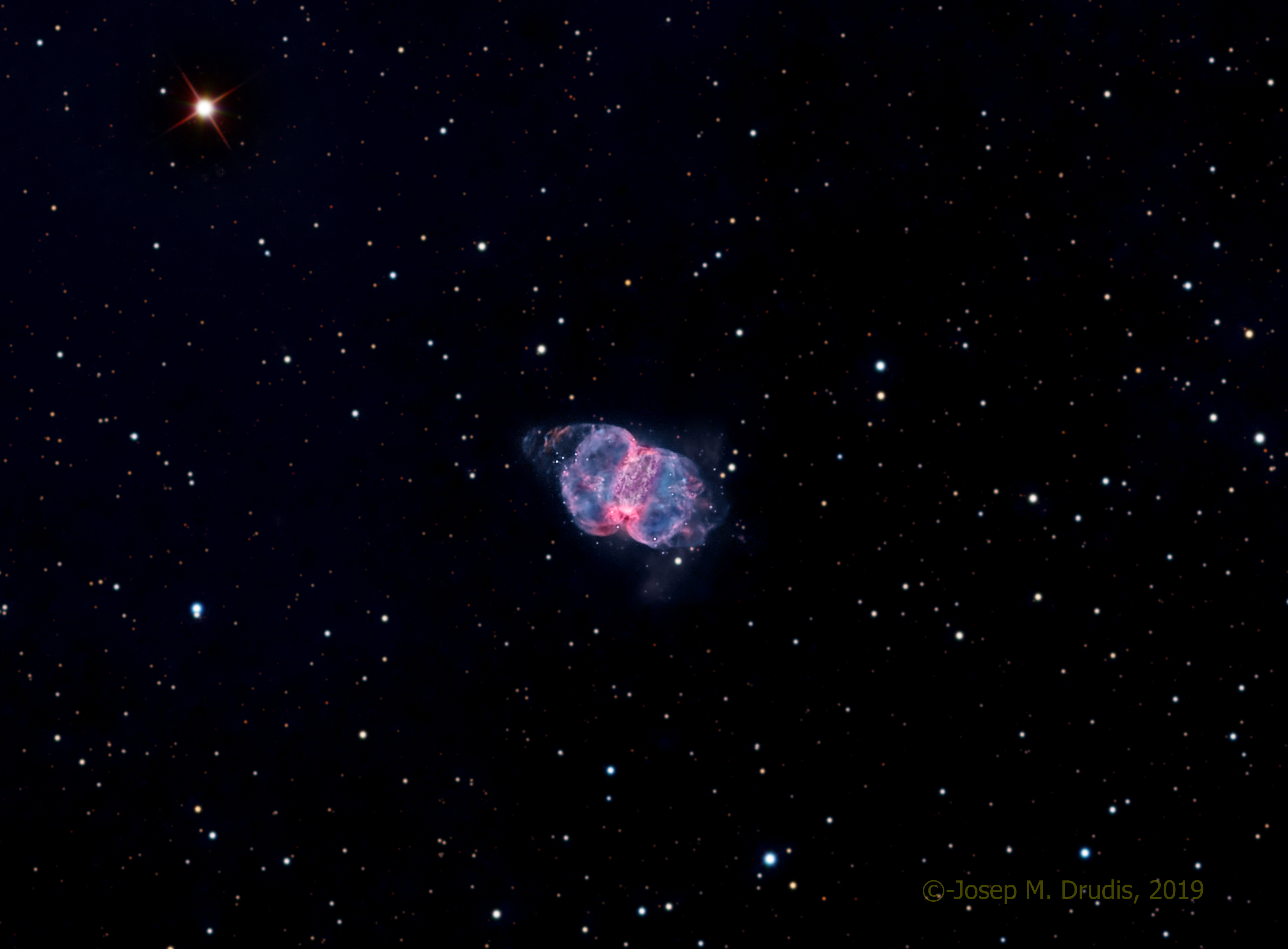Click on the image for a full resolution version
Messier 76 is, according to G. Ramos-Larios et al, a bipolar planetary nebula. It was, initially assigned two New General Catalogue numbers, NGC 650 and 651, because its bi-lobed structure was not fully understood at that time. It is a small nebula (2.7×1.8 arcmin) which, at its 2,500 light year distance, means that it is about 1.2 light years across. It is also known as M76, for short.
M76 is one of four planetaries present in Messier’s Catalogue. The other ones are M27, M57 and M97. It was discovered by Pierre Méchain in 1780 and immediately included by Messier in his catalogue.
The bright star at its upper left id HD 10498, also named HIP 8063, an +8.27 magnitude giant star, K5 type that lies 867 light years away (one third of the nebula’s distance). Its radius is over 27 times that of our Sun.
The image was taken with narrowband filters (Halpha, OIII and NII). The NII emission image proved to be quasi-identical to the Halpha emission, and therefore, it was color mapped to Red, just as Halpha.
Additional Information
Object
Name(s): Messier 76. M76. NGC 650/651
Type: Bipolar Planetary Nebula
RA: 01h 42m 15.8s
Dec: +51º 34’ 46.7”
Constellation: Perseus
Size (arcmin): 2.7×1.8 arcmin
Magnitude: +10.1
Distance: 2,500 ly
Image
Date: 2019-09-21 to 2019-10-20
Location:New Mexico Skies, Mayhill, NM, USA
Size (arcmin): 28×21 arcmin
Telescope: 24” f/6.5 Reflector
Camera: FLI PL16803 (4096x4096pix)
Guiding: Astrodon MonsterMOAG off-axis guider
Total exposure: 26hours 10min (Ha: 10h; NII: 6h; OIII: 8h40m; RGB: 1h30m)
Processing: CCDStack, Photoshop CC 2020
